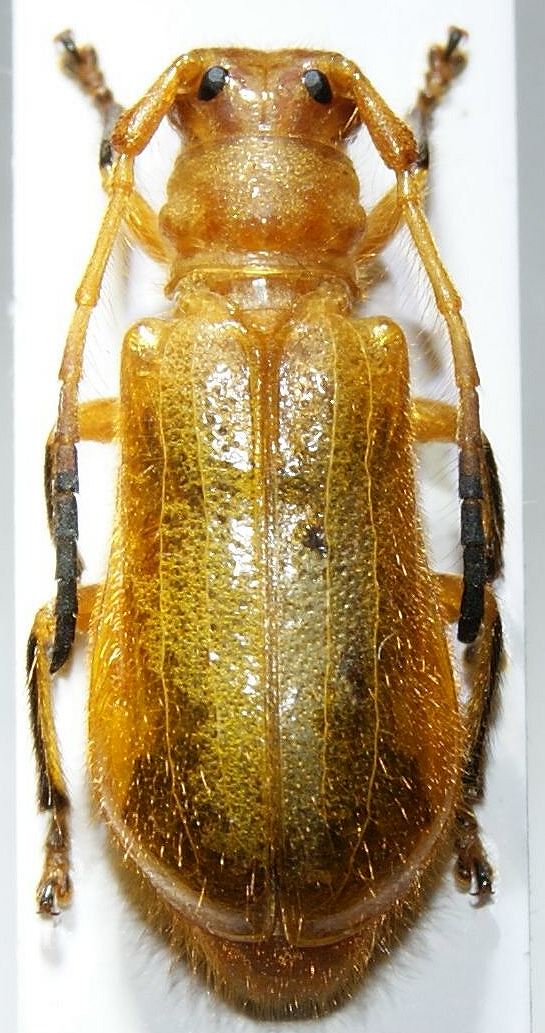| T O P I C R E V I E W |
| Andre |
Posted - 01/06/2013 : 17:22:45

122.31 KB
Tam Dao, Female, 17 mm. |
| 6 L A T E S T R E P L I E S (Newest First) |
| Xavier |
Posted - 14/06/2013 : 18:37:38
quote:
Originally posted by Andre
The determination via picture is very difficult, but the identification of the genus or near to the correct species is also very helpful.
YES ! I Agree with you !  |
| Andre |
Posted - 14/06/2013 : 00:05:53
Thank you, Xavier and Francesco.
The determination via picture is very difficult, but the identification of the genus or near to the correct species is also very helpful. |
| Xavier |
Posted - 09/06/2013 : 10:26:31
quote:
(unfortunately, I observe all these specimens as pictures, so my impressions may be wrong. ) )
Of course Francesco!  We know that many longicornist refuse to participate in the forum because they are afraid of making mistakes on picture, but when we make a correct determination, they take advantage, right? We know that many longicornist refuse to participate in the forum because they are afraid of making mistakes on picture, but when we make a correct determination, they take advantage, right? |
| Francesco |
Posted - 09/06/2013 : 09:00:48
Honestly to say, I no longer understand these (sub)genera.
The posterior enlargement of the elytra is an evident subjective character in order to separate Plaxomicrus from Atrobacchisa.
If we consider the elytral pubescence (sparse and elevated in Plaxomicrus, dense and recumbent in Atrobacchisa), A. holorufa (here, well corresponding to the type of Rondon & Breuning, 1970: Fig. 43c) and this species should belong to Atrobacchisa.
But, if we consider the male character of the bowed mesotibiae, Atrobacchisa holorufa should belong to Plaxomicrus.
This specimen is a female, so I do not know.
Maybe Atrobacchisa should be considered as a subgenus of Plaxomicrus...
Actually, I think you are right, it should by Plaxomicrus pallidicolor.
(unfortunately, I observe all these specimens as pictures, so my impressions may be wrong. ) ) |
| Xavier |
Posted - 09/06/2013 : 08:35:20
Black parts of legs are different, but it's closer to this one, no ? |
| Francesco |
Posted - 09/06/2013 : 07:29:04
Bacchisa (Atrobacchisa) oder Plaxomicrus... das hängt von männlichen Merkmalen ab... aber wahrscheinlich könnte es Bacchisa (Atrobacchisa) holorufa Breuning, 1968 von Laos sein. |
|
|


